Bathroom screen
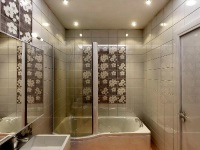
How many times have you raised righteous indignation in your shower after someone in your family flooded the entire bathroom floor during water procedures? No matter how carefully you try to wash, water droplets always get traitorously on the bathroom walls and floor, creating dampness all around. This can be a real threat to your health, there is a great chance of slipping on the wet floor and getting seriously injured.
Someone tries to solve this problem by using special curtains for the bathroom. But such curtains look, as a rule, cheap and tasteless. In addition, if they are accidentally touched, they begin to stick to the body unpleasantly. Bath screens can be a great alternative to them.
These simple yet robust designs have been used around the world for centuries. Of course, over time, their design and manufacturing materials have become more sophisticated. In this article, we will tell you all about bathroom screens and help you choose the screen that best suits your needs.
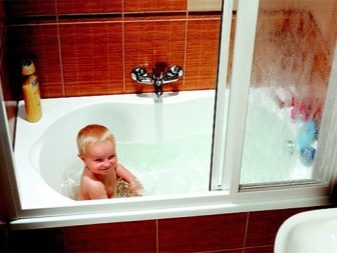

Materials
Before, bathroom screens were used not so much to protect the walls and floor from moisture, but solely for aesthetic reasons. Such screens were made of wood and were intended to be a decoration of the bathroom, protecting the person who was washing from prying eyes.
Now bathroom screens are mostly made of two materials: glass and plastic.
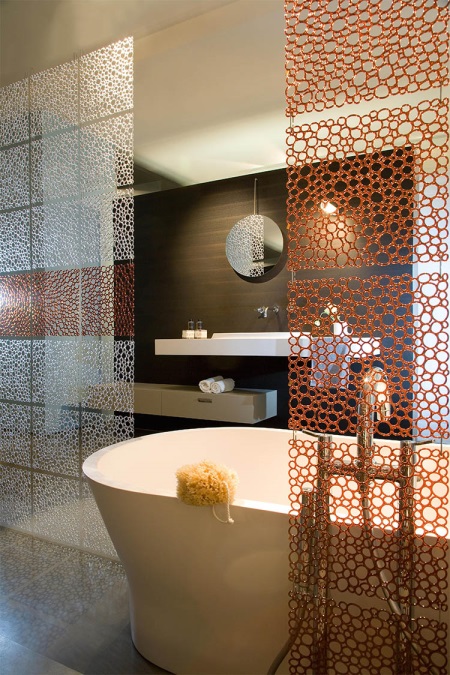
Polycarbonate
Polycarbonate is a universal materialIt has become ubiquitous in the last few years, from building greenhouses and roofs to making lenses and CDs.
Polycarbonate has the following useful physical properties:
- It is heat-resistant and withstands even large temperature fluctuations perfectly;
- It has high strength and impact resistance, so you don't have to worry about accidentally splitting the screen and injuring yourself while taking a water bath;
- Polycarbonate is resistant to chemicals, making it easy to clean;
- Polycarbonate is a lightweight material and constructions from it are almost weightless;
- It is easy to install, since plastic is bendable, and the probability of its splintering or scratching during installation is much less than when installing glass.
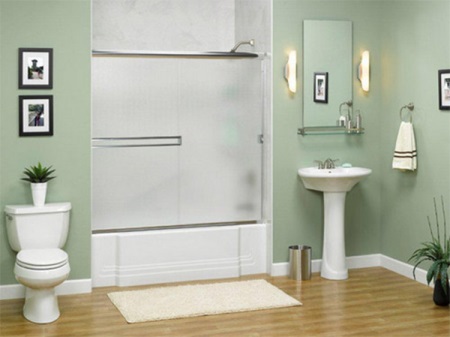
All of these properties make it an ideal material for use in the bathroom. In addition, screens made of plastic, as a rule, cost much less than screens made of glass.
Glass
Advantages of using screens made of glass:
- Glass is resistant to corrosive environments;
- It is hygienic, does not rot and does not grow germs and mold on it;
- Glass screens have low thermal conductivity;
- Their service life is much higher than that of plastic screens;
- As for the choice of painted screens, you should consider that the coloring of glass screens is more stable.
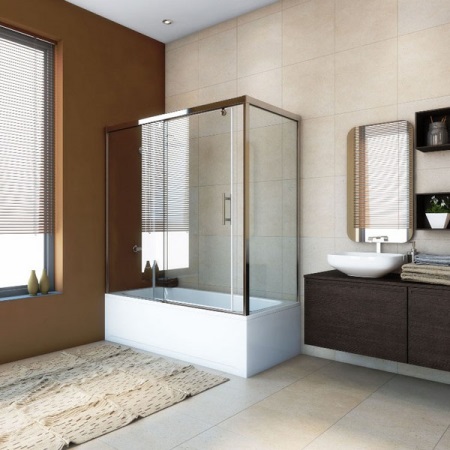
Transparent glass screens can fit absolutely any bathroom interior and create a unique play of light that cannot be repeated by any other material.
Classification by design
All screens can be conditionally divided into two large groups: movable and fixed.
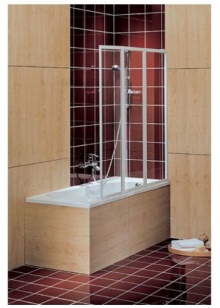
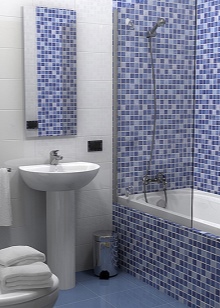
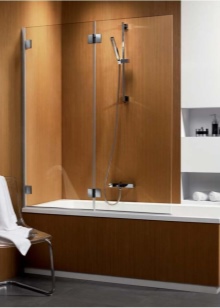
Movable screens are installed on the edge of the bathroom and attached to the walls near it.
According to the type of construction such screens are divided into:
- Frame - have a special plastic or metal frame, which allows the use of thinner glass or plastic. Such designs are considered more durable and reliable and will not allow a single drop of moisture to fall on your floor.
- Frameless screens. As a rule, thick tempered glass is used to make them. The most common is the model of the screen, covering half of the bath, with smooth rounded corners. They are also called angular.
- Combined or multi-section screens, as the name implies, combine both of the above types of designs.
- Also the screens can be solid and composite.
Depending on the type of leaves used, the screen walls can be:
- Opening - With one or more leaves that open by pushing outward.
- Sliding - Where either one door on a roller moves out to the side or two doors move apart.
- Folding - doors that fold on hinges.
The first option with opening flaps is not the most convenient and is suitable only for baths with a large area.
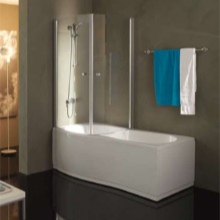
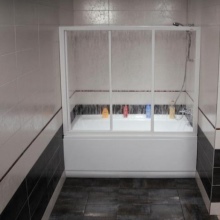

Role in design
The screen is no less significant element of the decor of the room than tiles or plumbing, as because of its impressive size, it is simply impossible not to notice it in the room. What should be taken into consideration when choosing a design of a screen for your bathroom?
- For those who do not want the screen in their bathroom to be too noticeable, a screen of transparent glass or polycarbonate is ideal.
- If you have several people living in your apartment, and you have a combined bathroom, it is better to use a frosted screen or a screen with a dense pattern.
- In addition, both glass and plastic screens can be made in a certain color scheme. It should be chosen according to the color scheme of your bathroom.
- The bathroom screen can be supplemented with an original design touch, if you place some beautiful drawing on it or create an interesting texture on it.
- We recommend giving preference to semi-transparent screens of light colors. Otherwise, you will have to think more carefully about the lighting directly over the bathroom itself.
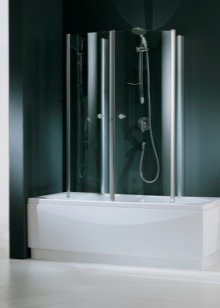
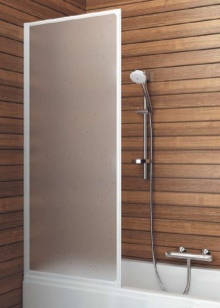
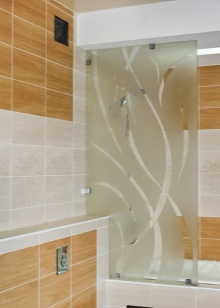
How to make a screen for the bathroom with your own hands?
If you could not find a screen in the store of the desired size, color or design, you can make it yourself. In addition, a homemade screen will cost you an order of magnitude cheaper than a purchased one. When making a self-made screen, it is better, all the same, to give preference to plastic, since this material is much easier to work with.
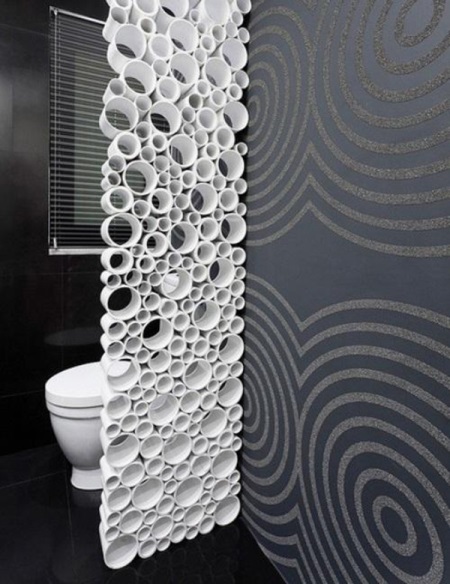
We will need the following materials for work:
- A sheet of polycarbonate of the required height and width;
- Profile for making the frame (we will make a frame screen);
- Self-tapping screws and a screwdriver;
- Construction tape measure;
- A saw/tool/pencil/scissor/saw;
- A handle to open the screen.
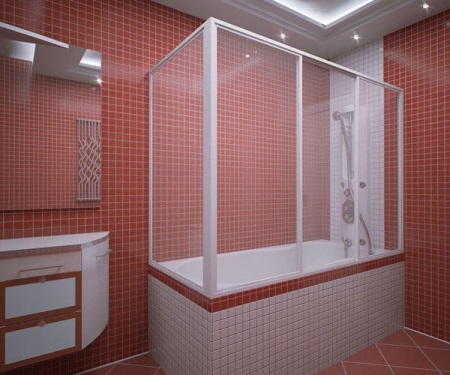
Procedure:
- Using a tape measure, measure the exact dimensions of your future screen. Note that you must leave a space between the upper edge of the screen and the ceiling to let in light and fresh air. Otherwise too much humid air will gather behind the screen and you will simply not be able to breathe.
- Mark the resulting dimensions on a sheet of polycarbonate and carefully cut off the excess with any suitable tool at your disposal.
- If you plan to make a fixed screen, the lower profile is attached to the edge of the bath with sealant. Allow the sealant to fully cure before proceeding with the next steps.
- The side profile will be attached to the wall. First, you need to make a marking in the places where you plan to place the fasteners. Then make holes in the appropriate places and attach the profile to the wall with self-tapping screws.
- Insert the polycarbonate into the grooves of the profile and make sure that it sits tightly and does not wobble in it.
- Attach the remaining profile along the top edge of the sash and the second side.
- Attach the handle at a comfortable height for you.
- Check that the screen is working.
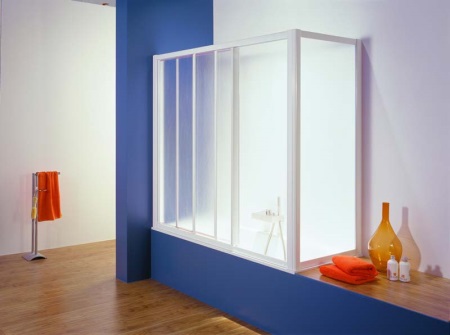
If you want, you can make a screen from the floor, not from the bathtub rim. However, in that case it makes sense to think about buying a shower cabin. As you can see, the process of making a screen for the bathroom with your own hands is not complicated at all. If you buy special rollers and appropriate mountings, you can even make a sliding or folding screen yourself.
Glass screen, in principle, you can also install yourself. True, in this case you will have to go to a special workshop, where you will cut out a piece of glass of the required size and shape. Also, it is better not to install the glass in the profile and mount it alone, but with a partner. As we have already mentioned, glass is heavier than plastic and there is a great chance that it will slip out of your hands and break. Use special construction gloves when working.
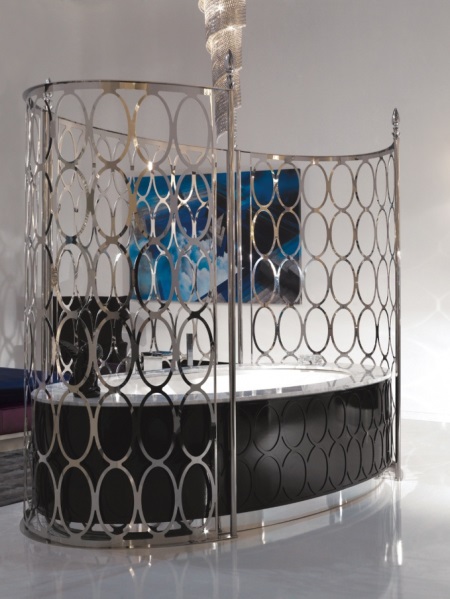





I think you should buy a decorative screen to complement the interior.